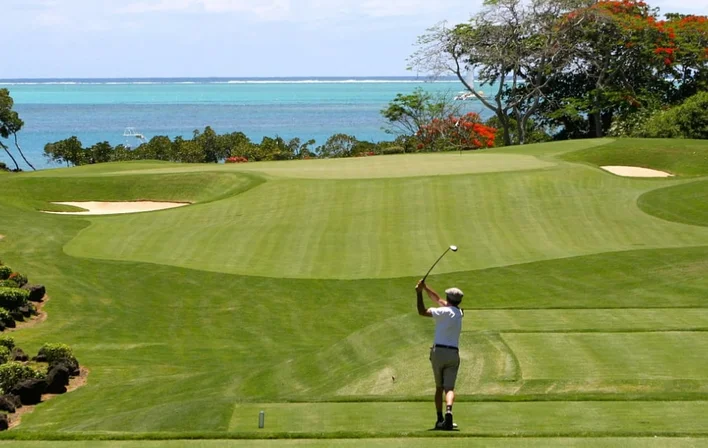Golfer’s Elbow: Your Golf Game Doesn’t End Here

Golfer’s elbow is often the result of overusing the muscles in your forearm that allow you to flex, grip, and rotate your arm. Also known as medial epicondylitis, golfer’s elbow can cause inflammation, pain, and acute sensitivity as a result of small tears found in the tendons.
Misuse of the muscles and tendons during activities that require repetitive wrist motion through gripping or flexing are most often the culprit of golfer’s elbow. It’s much less common than its relative tennis elbow (lateral epicondylitis), affecting less than 1% of the population.
Both conditions are a form of tendonitis, however, the biggest differentiator between the two is that golfer’s elbow is the results of wear and tear of the tendons on the inside of the elbow, whereas those with tennis elbow are afflicted by pain or damage to muscles on the outside of your arm.
What causes golfer’s elbow?
Although it gets its name from the beloved sport, playing is not necessarily the only way to get golfer’s elbow. Activities that require frequent, repetitive use of the wrist and forearm muscles can cause tears or strain, not unlike the causes for tennis elbow.
Other possible causes include the following:
- Sports such as tennis, weightlifting, or bowling
- Working on a computer and typing-related jobs
- Manual work including hammering, raking, and using a screwdriver
- Painting and using repetitive brush strokes
Get better with physical therapy
Treatment usually involves avoiding the activity that causes pain. Building up strength and flexibility can prevent and relieve the localized pain, which is why working with a physical therapist can help you heal faster. A PT can create an exercise routine that includes stretches and strengthening exercises to ease pain and regain motion in your arm.
A physical therapist will be able to monitor your progress, making sure the exercises you are doing are being done properly and not causing any excessive stress that would otherwise worsen your symptoms.
Common treatment plans include a combination of:
- Lots of rest – You will want to take a break from activities that cause discomfort until the pain is gone. Continuing with your normal routine can disrupt the healing process and make the healing process take even longer.
- Icing the affected area – Ice therapies are recommended to minimize swelling and reduce strain. Using ice on the affected area and massaging the inner elbow a couple of times a day can help lessen the pain.
- Strengthening and stretching exercises – Exercises created for you by your PT are a great way to regain motion and reduce stress on the tendons that become affected by golfer’s elbow.
Following your treatment plan is the most effective way to heal and can be key for future injury prevention.
Luna can get you back out there in no time
With the help of Luna’s on-demand care, physical therapy is more accessible than ever! Your PT will come to you in the safety of your home so you don’t have to worry about any office visits or waiting in the parking lot for your provider to call you in. All of your sessions can be easily completed in your home without any unnecessary hassle of going to the clinic, so you can focus more on your healing. Contact Luna to get started with a physical therapist near you, so you can play your best golf game ever this year season.
Handpicked Resources For You
Best Exercises for Treating and Preventing Golfer’s Elbow – Healthline
Medial Epicondylitis (Golfer's and Baseball Elbow) – Johns Hopkins Medicine
Golfer’s Elbow: Strengthening and Stretching Exercises – National Center for Biotechnology Information (NCBI)




